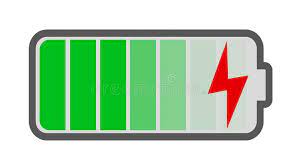Everyone recharges their own batteries, even when the batteries are dead. However, when you charge your battery, do you just take a charger or an adapter to charge your battery? This is unsafe, and it may cause a serious risk of explosion! Below is an overview of rechargeable batteries that may help you!

1. Use a suitable charger for the battery you want to charge
Rechargeable batteries are usually charged in an A/C adapter that plugs into a household cradle outlet. Depending on the type of battery you’re charging, at any electronics or hardware store, you’ll usually find a charger that’s the right size.
Fast chargers are similar to standard chargers, but they also lack a charge control system that prevents or mitigates voltage surges. They’re efficient at quickly charging the battery, but drastically reduce battery life.
2. Use a suitable battery in the charger
Never try to recycle a single-use battery, or you may damage and corrode the battery. Only try to charge batteries that are specifically marked “rechargeable”. If you have some dead disposable batteries, dispose of them properly and buy rechargeable batteries.
Nickel-metal hydride (NiMH) batteries are common in consumer products, especially power tools. In electronic devices, by contrast, lithium-ion batteries are common. Both battery variants are commonly used and both are rechargeable. When you first start using a new set of rechargeable batteries, turn them off completely before charging. When a battery’s capacity is reduced due to premature charging, it reduces the likelihood of a phenomenon known as the “memory effect.”
3. Insert the charger into the socket
The power indicator lights automatically when most A/C adapter chargers or when the “off” button is turned on. Make sure all power lights are on and you can start charging the battery. Always refer to the manufacturer’s instructions. Read the battery charger instruction manual carefully, which should include important information such as the time it takes to complete charging, the key to the indicator lights, and battery-specific safety information.
4. Correct configuration
This means that the positive (+) end is in contact with the positive terminal of the charger. On most chargers with A/C, the diagram should show how to properly position the battery. One side of a flat battery will usually rest against the spring, while the “bump” on the battery will be on the flatter side.
5. Fully charge the battery
Most chargers should change the light from green to red when the battery is fully charged and vice versa. Do not interrupt the program by unplugging the charger’s power cord or removing the battery early, or your battery life will be drastically reduced.
6. Remove when charging 100%
Overcharging the battery is a major cause of shortened battery life, especially with fast charge chargers.
“Trickle charging” is a technique that reduces the charge to around 10% of the battery’s capacity, which is usually enough to keep the battery in its final state of charge without triggering a discharge, which could result in a shorter battery life. Many manufacturers don’t support long-term trickle charging, but if you have a battery with an adjustable charging rate, dropping it to a lower price can be an effective way to keep your battery juicy.
>>>>>>>>>>>>>Battery
